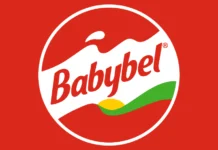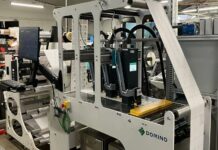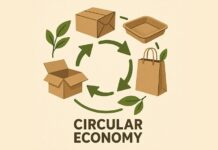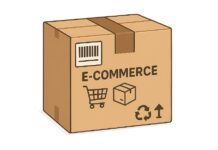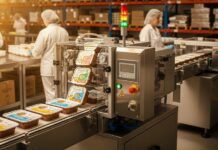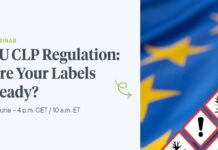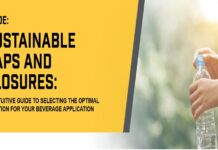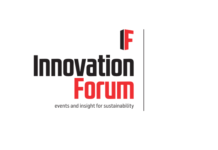As the world grapples with the immediate urgency when it comes to sustainability, the packaging industry happens to find itself at the crossroads. The longing for solutions that go on to balance environmental ownership along with functionality, economic viability, and consumer satisfaction has never been more intricate. In the middle of this spectrum, the approach to packaging that Google has is indeed redefining the future as far as design and materials are concerned.
As Miguel Arevalo goes on to lead the packaging sustainability efforts by Google, its packaging team has indeed become a driving force as far as the company’s endeavor to rethink the packaging spectrum is concerned, not only from a logistical perspective but also as a catalyst when it comes to the global change. The packaging team’s work happens to be at the pole position of Google’s mission in order to revolutionize the packaging part in its entirety, there adopting transparency, adaptability as well as sustainable to the growing needs of a world that’s changing pretty fast.
Sustainable packaging push by Google does not mean a one-size-fits-all solution but a consistent learning, experimentation, and iteration journey. As per Arevalo, packaging is not just about the product being enveloped. But it is more about making sure that it has minimal environmental effect, it can get reused as well as recycled, and above all, it serves the needs of the future for a planet.
The packaging approach by Google always puts forth fiber-based materials in order to drive circularity. Taking into account the barriers of mixed-material packaging, Google tends to focus on a single material stream, which is fiber, in order to leverage the present paper stream and enhance the rates of recyclability. As per Arevalo, they acknowledge the versatility of plastic through various applications, but the ubiquity in packaging goes on to possess direct issues to its effective recyclability. Taking this into consideration, their team focuses on making sure to maximize the fiber potential. This kind of strategy needs the eradication of plastics from packaging so as to make sure of compatibility with the present recycling systems.
It is well to be noted that the packaging evolution of Google pinpoints the concept of circularity. With millions of products that are shipping across the world, Google’s team recognizes the requirement for packaging that works throughout diverse regions as well as product categories. The company’s commitment when it comes to eradicating plastic from its packaging goes on to reflect its focus. As far as material circularity is concerned, thereby making sure that the components in packaging can get readily recycled with the present infrastructure.
Google stands committed to developing plastic-free packaging solutions that go on to prioritize recyclability. As per Arevalo, they have to ask themselves, how can they create packaging that is completely circular by making sure that the materials are recycled effectively?
Sustainable packaging push by Google involves knowledge as well as transparency sharing and that has indeed become the company’s strategy. The Google packaging team went on to stress that one of the toughest challenges when it comes to the packaging sector today is consumer expectations management. Due to sustainability claims Often getting clouded by greenwashing, Google believes that honest communication is indeed critical when it comes to building consumer trust.
According to Arevalo, one of the major lessons they have learned is that consumers want transparency, and they do not want to hear about what the company is doing; rather , they want to gauge how and why the company is doing it.
The fact is that it is not just about making claims, but it is more about telling a tale that syncs with the long-term sustainability objectives. Google has adopted a kind of open-source kind of an approach in order to support this by developing resources such as a plastic packing design guide. By sharing their journey, which includes challenges as well as successes, Google aims to empower even other companies that need to speed up their sustainability efforts.
When it comes to Google, pursuing sustainability is not just about attaining perfection overnight, but it is more about making incremental enhancements. For Google, sustainability is a journey, and it is about progress and not perfection. The company must acknowledge that it is constantly learning as well as enhancing as things go along. The fact is that no solution happens to be perfect, but the company is indeed committed to decreasing its effect every step of the way.
The packaging team at Google strongly believes in partnership with the packaging sector and even throughout the sectors. As per Arevalo, there is no single company that can tackle these barriers all by itself. They need to work together in order to drive the real change. The approach that Google has to packaging is rooted in collaborations with industry leaders, competitors, and suppliers in order to develop a holistic solution that benefits society as well as the environment. At Google, they believe innovation, when it comes to sustainability, has to be a collaborative endeavor and not a competitive one.
Packaging, in doubt happens to be a multidisciplinary barrier involving materials science, logistics design, and consumer behavior. Working in silos doesn’t work at all, and one has to openly share the insights and learnings, thereby empowering other companies also to develop certain solutions. It is just not enough to claim that something can be done. Rather, it is better to demonstrate how solutions can be achieved. Google collaborates with logistic partners, material manufacturers, as well as competitors in order to push the boundaries of what more can be possible when it comes to packaging. They aim to speed up the innovation part and share the knowledge so that the entire sector can transition.
Google happens to be actively looking into the distribution solutions part, which can challenge the present produce-use-dispose elements to other closed loops. The company has been working on certain internal closed-loop systems in order to develop solutions so that product components can be moved among suppliers to the assembly centers, and they have also gone on to create reusable closed-loop systems in order to eradicate single-use packaging and also drive circularity within their supply chain.
At the center of Google’s packaging strategy is stressing design. The Google packaging team makes sure that a product packaging design happens to be integral to the sustainability efforts. Right from reducing the unwanted materials to going ahead and creating designs that push reuse, aesthetics as well as functionality when it comes to packaging play a very critical role as far as driving sustainability behaviors are concerned.
Arevalo says that packaging has to work not just for today, but it has to be there for the long term. One needs designs that work for consumers and are indeed scalable and also, of of course, within the existing infrastructure, which means considering everything right from the material’s life cycle to its end-of-life effect.
As the packaging sector faces rising pressure in order to become more sustainable, the packaging team at Google and its work serve as a benchmark for others in the industry. By way of transparency, innovation, and collaboration, it is for sure that the sustainable packaging push by google is not only about decreasing waste but is more about rethinking the overall life cycle when it comes to packaging a product. Packaging future balances environmental concerns along with cutting-edge innovation. Arevalo says that it is about rethinking packaging from the source and materials that one uses. At Google, they are committed when it comes to pushing boundaries and leading the charge, and they also know that the more they collaborate, the faster the pace will become to get there. It is not just about being perfect, but it is more about making progress, which is much more meaningful, and that too together.
As one looks into the future, it is indeed clear that the packaging industry is going through a transformative transition. With leaders, such as Google packaging sustainability lead Miguel Arevalo, taking the charge, the future is one where packaging goes on to become a major player in the fight against the change in climate, pushing innovation as well as collaborating at every single stage when it comes to the supply chain.




